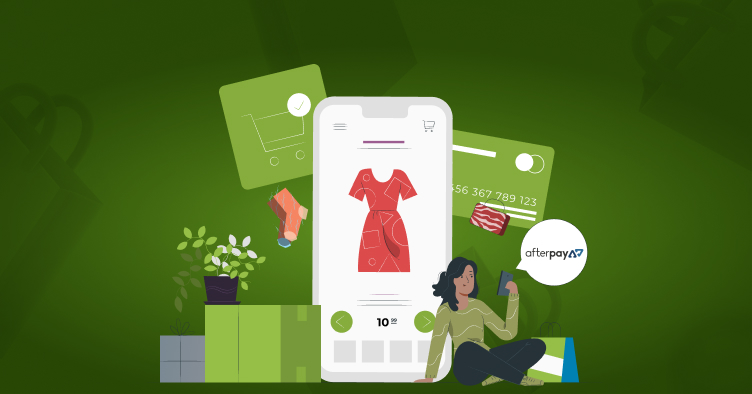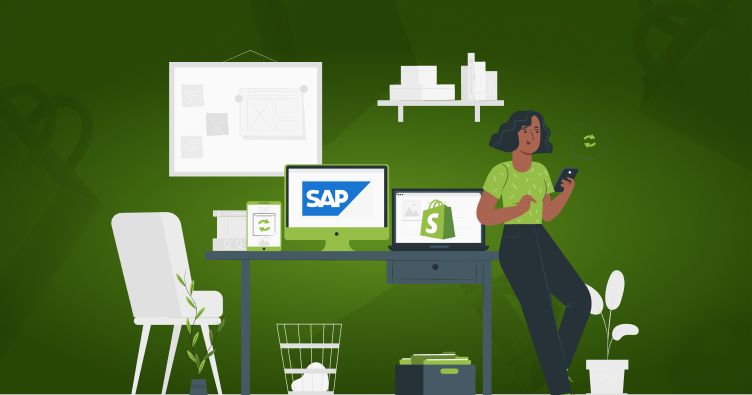Your Sage ERP contains critical business data that impacts every department. When running a Shopify ecommerce store, maintaining control over this data flow becomes essential for managing online orders and customer information. The Sage Shopify integration bridges this gap through automation and intelligent data mapping, eliminating manual data entry that creates bottlenecks and introduces costly errors.
Summary
- Integration fundamentals – What Sage Shopify integration means and how it automates data flow between platforms
- Set up methods – Pre-built connectors like A2X versus custom integration options for different business needs
- Key benefits – Eliminating manual entry, improving accuracy, and streamlining financial reporting
- Implementation steps – Practical guide for connecting Shopify with Sage 100, 200, 300, and other versions
- Best practices – Tips for data mapping, synchronization schedules, and maintaining data integrity
What Is Sage Shopify Integration?
Sage Shopify integration establishes an automated connection that maps data movement between your Shopify ecommerce platform and Sage ERP system. This bidirectional synchronization means information flows automatically in both directions without manual intervention.
How Data Mapping Works
The integration process involves data mapping, which defines how information from Shopify fields corresponds to Sage fields. When a customer places an order on your Shopify store, the integration automatically creates the corresponding sales order in Sage, transfers customer information, updates inventory counts, and records financial transactions.
Without integration, your team must manually export data from Shopify, reformat it to match Sage requirements, and import it into your ERP system. This manual process is time-consuming, error-prone, and doesn’t scale as your business grows.
How Does Sage Integration With Shopify Work?
The Sage integration with Shopify operates through middleware or connector applications that sit between your two platforms. These integration tools understand how each system sends and receives data, then map the information accordingly.
Integration Architecture Options
When implementing a Shopify integration solution, you have two main architecture choices:
- Real-time integrations sync data immediately as transactions occur
- Batch integrations process data at scheduled intervals (hourly or daily)
Your choice depends on business requirements like order volume, inventory turnover rate, and the need for immediate updates.
The Integration Workflow
The integration follows this pattern:
- Data capture detects events like new orders in Shopify or inventory updates in Sage
- Data transformation converts information into the format required by the destination system
- Data transmission securely transfers the transformed data through API connections
- Verification and logging confirm successful transfer and maintain audit trails
For Shopify Sage 100, 200, or 300 integrations, Folio3’s solution creates an automated, real-time, two-way data exchange that eliminates redundant data entry. The system respects your unique business logic and workflows configured in Sage.
Key Benefits of Implementing Sage Shopify Integration
Operational Efficiency Gains
The Shopify and Sage integration delivers measurable improvements:
- Eliminate manual data entry – Computers handle repetitive tasks with zero errors, ensuring every shipping address, product SKU, and transaction amount transfers correctly
- Improve financial accuracy – Automatic summary journal entries and reconciliation transform multi-hour tasks into simple reviews.
- Enhance inventory management – Real-time synchronization prevents overselling and underselling.
- Streamline order fulfillment – Orders flow automatically from Shopify into Sage, while fulfillment updates trigger customer notifications.
Business Growth Advantages
- Scale operations efficiently – Handle growing order volume without proportionally increasing administrative overhead.
- Increase employee productivity – Teams focus on strategic tasks rather than manual data entry.
- Deliver consistent customer experience – Accurate order confirmations, realistic delivery estimates, and correct invoices build trust.
- Reduce deployment downtime – Turnkey integration solutions with training get systems operational quickly.
Integration Options for Shopify and Sage Versions
The Sage Shopify integration approach varies based on which Sage product your business uses.
Small to Medium Business Solutions
- Shopify Sage 50 Integration – Handles core functions like order import, customer synchronization, and basic inventory management for straightforward accounting needs
- Shopify Sage One Integration – Targets startups and small businesses with cloud-based simplicity and minimal configuration
Growing Business Platforms
- Shopify Sage 100 Integration – Supports higher transaction volumes, complex pricing structures, and multi-location inventory management with custom business logic.
- Shopify Sage 200 Integration – Provides enterprise-level capabilities with sophisticated financial reporting, multi-currency support, and complex approval workflows.
Enterprise Solutions
- Shopify Sage 300 Integration – Delivers comprehensive ERP functionality including financial management, distribution, inventory control, and project management. Folio3’s solution creates automated, real-time, two-way data exchange optimized for Sage 300
- Shopify Sage X3 Integration – Supports large enterprises with global operations, multi-entity consolidation, and extensive workflow automation.
How to Set Up Sage Shopify Integration
Step 1: Choose Your Integration Method
- Pre-built connector apps like A2X, Combidesk, and eBridge Connections offer faster deployment, regular updates, and lower initial costs. They work well for businesses with standard workflows.
- Custom integration development creates tailored solutions matching exact business requirements. This approach suits businesses with sophisticated processes, high transaction volumes, or specific compliance needs.
Step 2: Define Your Requirements
Document these key areas before implementation:
- Data synchronization needs (orders, customers, products, inventory, payments)
- Synchronization frequency (real-time, hourly, daily)
- Business rules for pricing, taxes, discounts, and customer segmentation
- Security and compliance requirements
Step 3: Configure Using A2X (Pre-Built Example)
- Connect your accounts by creating an A2X account, authorizing Shopify access, and linking your Sage account with regional settings.
- Set up data mapping by navigating to the Accounts and Taxes section, mapping transaction types to Sage accounts, and configuring tax rules. This one-time setup enables automatic categorization.
- Configure synchronization by setting manual or automatic triggers and scheduling sync times for unattended operation.
Step 4: Test Thoroughly
Create test transactions covering common scenarios, including regular orders, returns, refunds, and edge cases. Verify data accuracy by comparing records in both systems, then validate performance under realistic load conditions.
Step 5: Train and Deploy
Provide team training on new workflows and troubleshooting procedures. Plan a gradual rollout starting with a subset of transactions before expanding to full production. Monitor closely during initial operation for synchronization errors or performance issues.
Integration Tools and Platforms Comparison
Leading Integration Solutions
- A2X for Shopify and Sage specializes in ecommerce accounting automation, automatically categorizing sales, fees, taxes, and transactions. Handles complex scenarios like split payments, refunds, and multi-currency transactions.
- Combidesk Sage Business Cloud synchronizes data every 60 minutes for orders, refunds, and customer information. Some users report limitations with POS integration.
- eBridge Connections for Sage 50 provides straightforward setup and reliable bidirectional synchronization, suitable for small to medium businesses.
- CertiPro E-Link serves as a comprehensive middleware supporting Sage 100, 200, and 300 with extensive customization capabilities and real-time synchronization. Certified Sage Marketplace Partner.
- Zynk Integration Platform offers workflow-driven integration with pre-built solutions and custom workflow support for unique business processes.
- Folio3 Custom Integration Services creates tailored solutions for businesses requiring sophisticated workflows beyond pre-built connectors. Ideal for Shopify Plus implementations and enterprise deployments.
Key Takeaways
- Sage Shopify integration eliminates manual data entry and creates operational consistency across ecommerce and ERP platforms.
- Choose between pre-built connectors for quick deployment or custom development for sophisticated requirements.
- Successful implementation requires thorough planning, comprehensive testing, and proper user training.
- The integration delivers measurable ROI through time savings, error reduction, and improved scalability.
- Regular monitoring ensures your integration continues meeting evolving business needs.
Conclusion
Implementing Sage Shopify integration transforms how your business operates by automating data flows between your ecommerce platform and ERP system. Whether you choose pre-built connectors or custom solutions, thorough planning aligned with your specific business needs ensures success.
The proper integration eliminates manual data entry, reduces errors, and enables your team to focus on strategic initiatives rather than repetitive tasks. Your customers experience consistent service quality, while accurate financial data supports confident decision-making.
Ready to streamline your ecommerce operations? Contact our integration experts to discuss your specific requirements and discover how sage integration with shopify can transform your business.
Frequently Asked Questions
Does Shopify Integrate With Sage?
Yes, through third-party applications and middleware platforms like A2X, eBridge Connections, and CertiPro. No direct native integration exists between Shopify and Sage.
Who Does Shopify Integrate With?
Shopify integrates with payment gateways (PayPal, Stripe), marketing platforms (Mailchimp, Google Analytics), shipping carriers (UPS, FedEx), and accounting systems (QuickBooks, Xero, Sage).
Can I Integrate My App With Shopify?
Yes, through the Shopify API. Developers can create private integrations for internal use or public apps for the Shopify App Store.
Can Shopify Integrate With Any Website?
Most websites can connect to Shopify through custom development, existing plugins, or middleware platforms. The approach depends on the website’s technical capabilities.
What Accounting System Does Shopify Use?
Shopify doesn’t include built-in accounting. It integrates with QuickBooks, Xero, Sage, and FreshBooks for accounting functionality.
Can You Use Shopify as Accounting Software?
No. Shopify provides sales reporting but lacks comprehensive accounting features like accounts payable, general ledger management, and full financial reporting.
How Much Does Sage Shopify Integration Cost?
Pre-built connector apps range from $50 to $300 monthly. Custom integration development costs between $5,000 and $50,000+ based on complexity.
How Long Does Implementation Take?
Basic connector configuration takes one to three days. Moderate customization requires one to two weeks. Complex enterprise implementations need four to twelve weeks.
What Data Syncs Between Shopify and Sage?
Customer information, product catalog with pricing, sales orders, inventory quantities, payment records, shipping and fulfillment updates, refunds and returns, and tax calculations.



